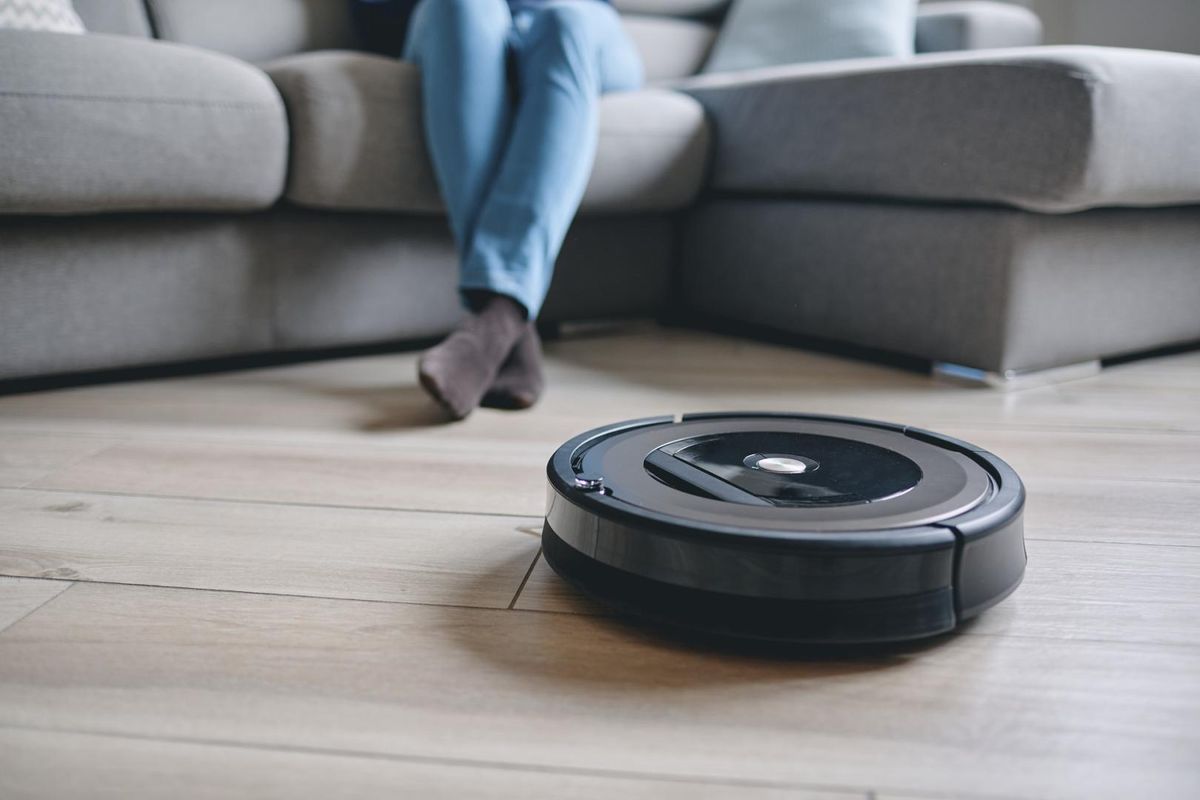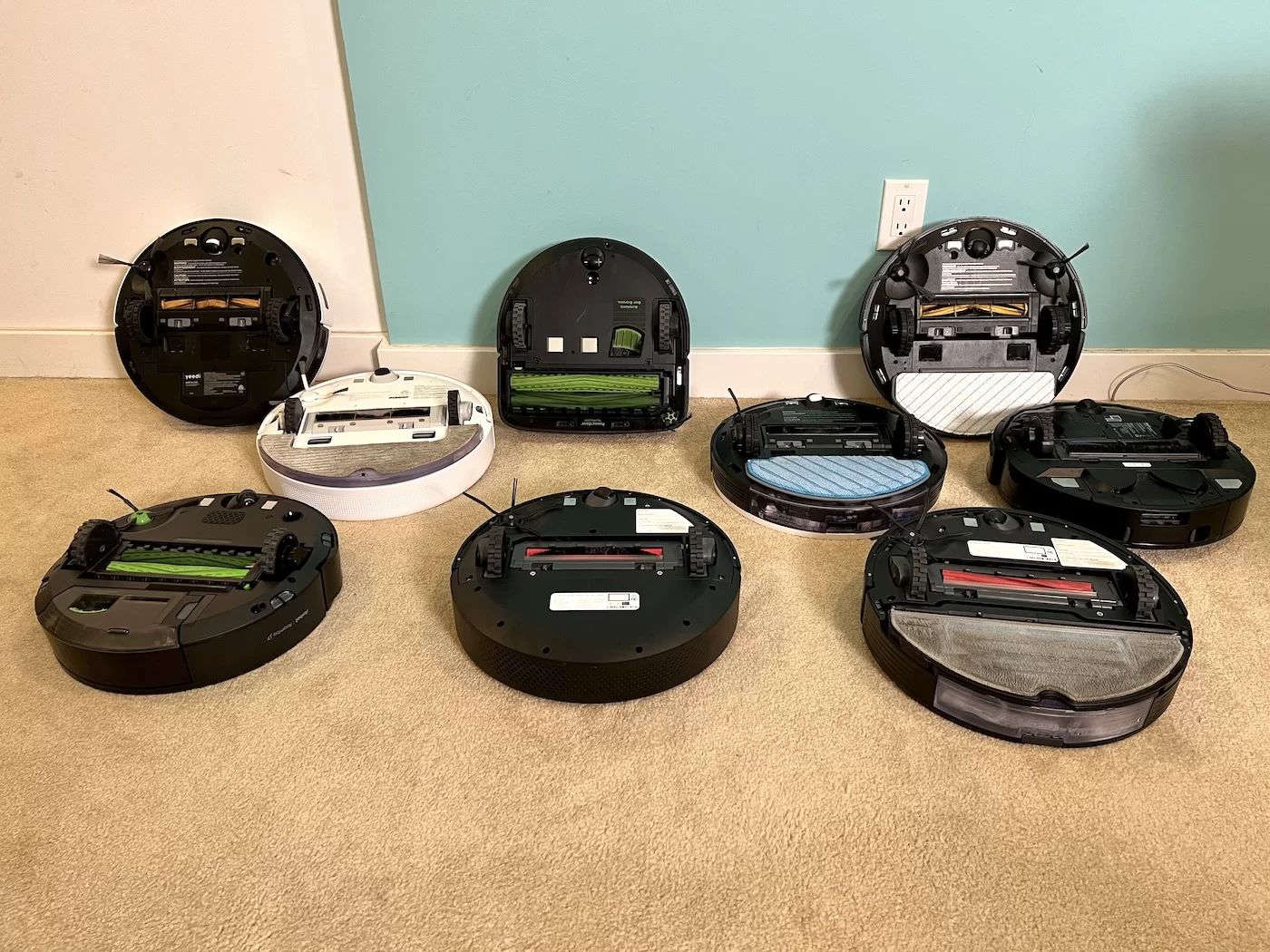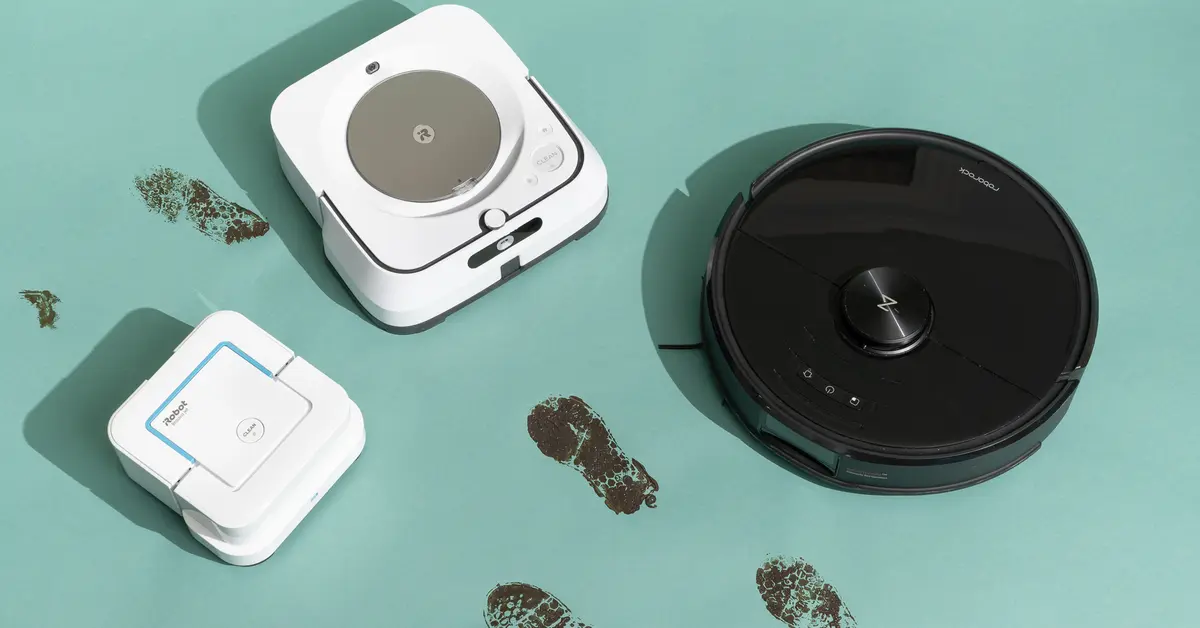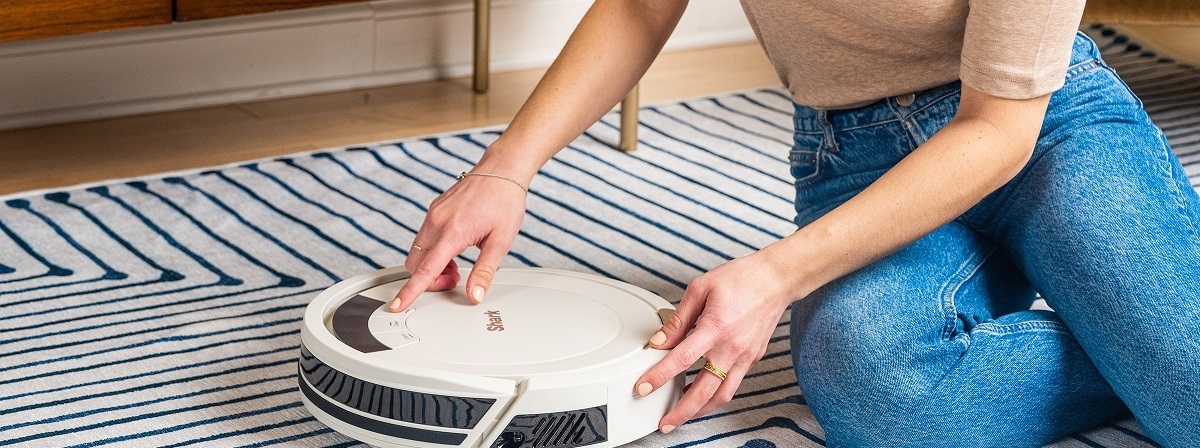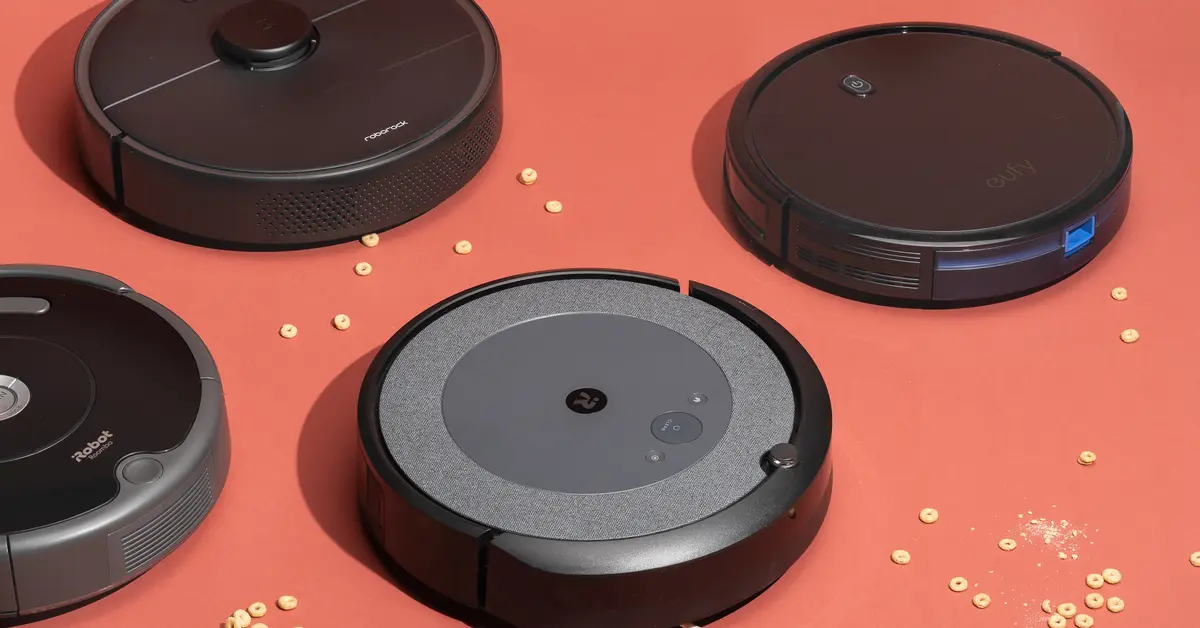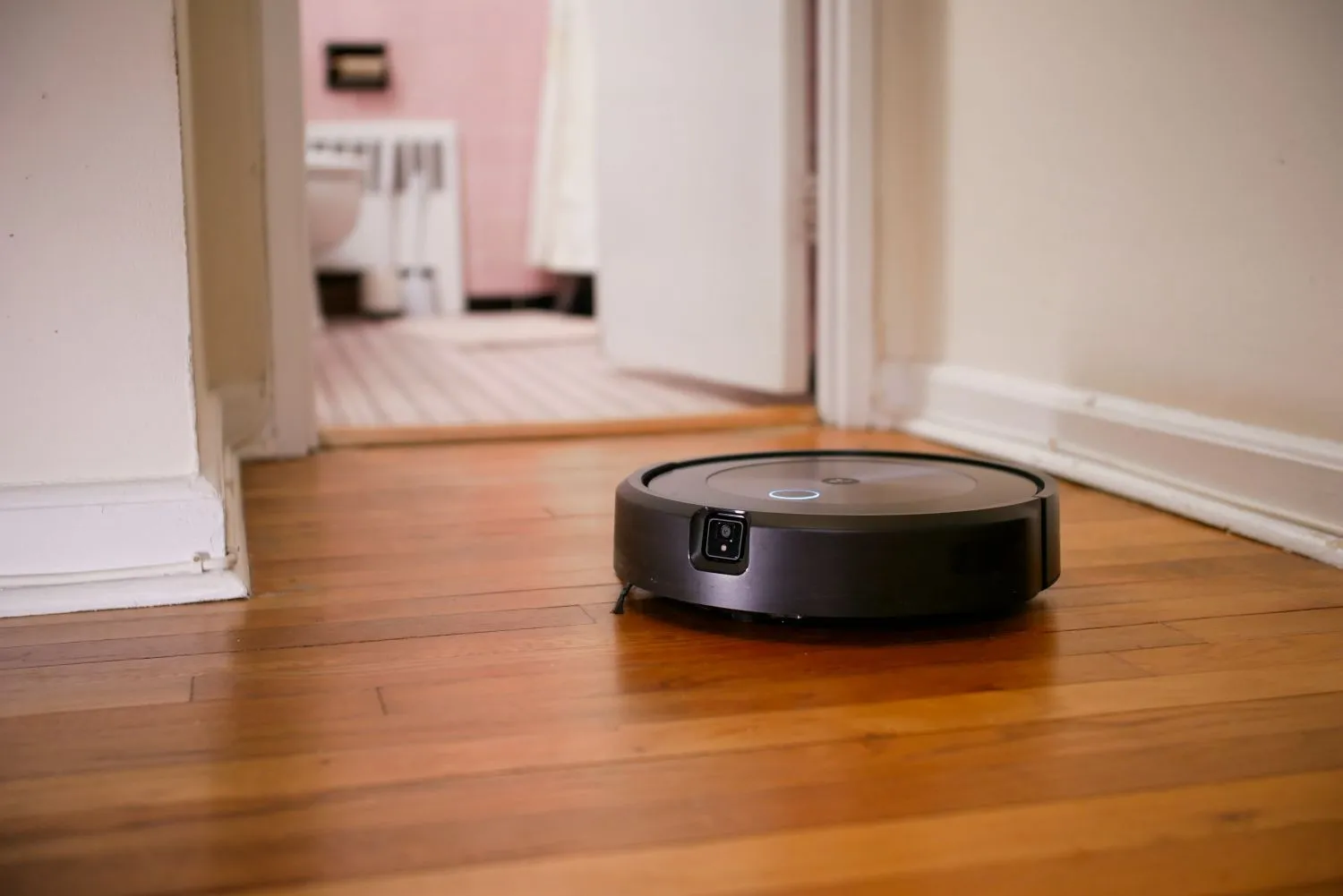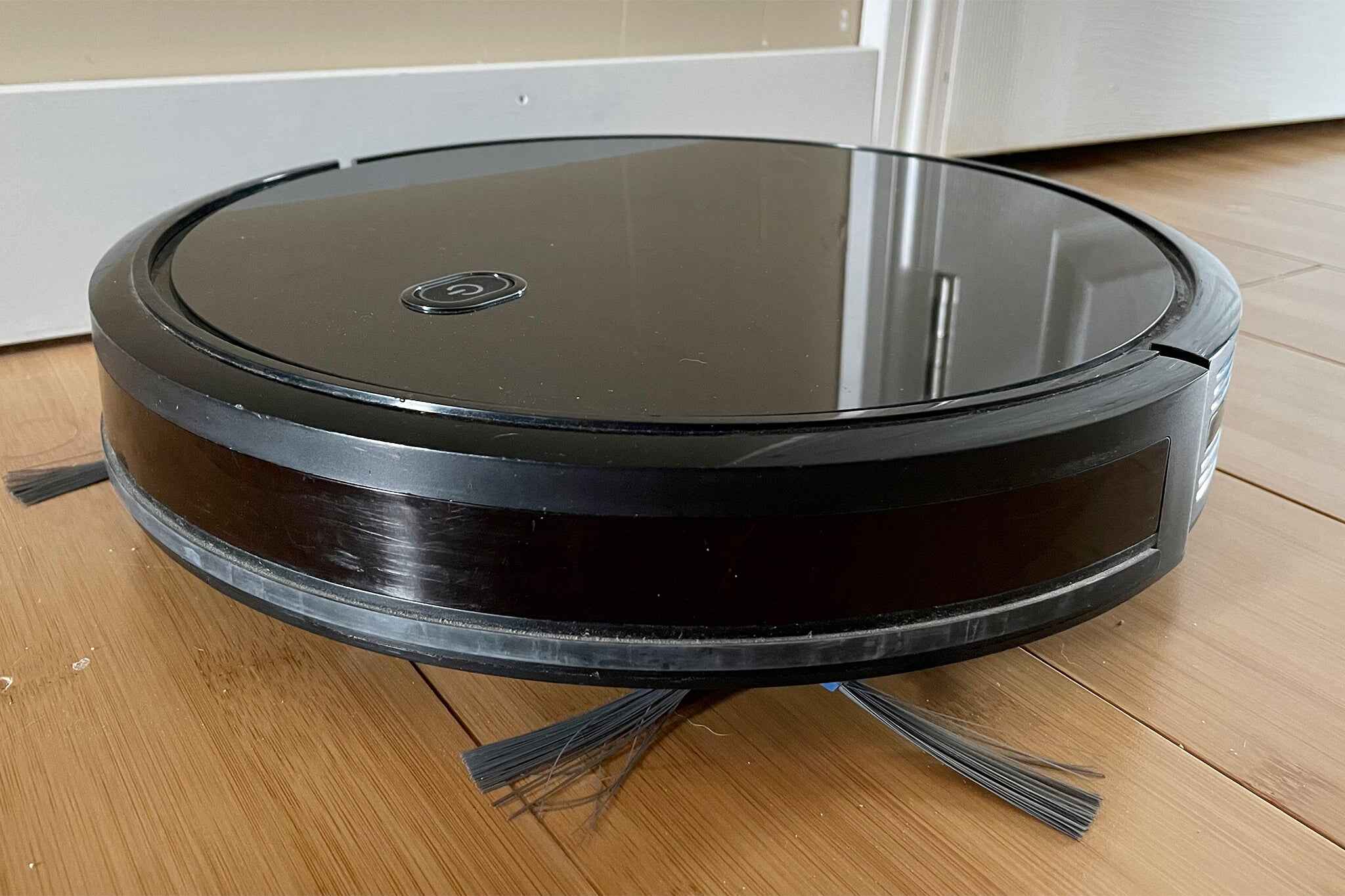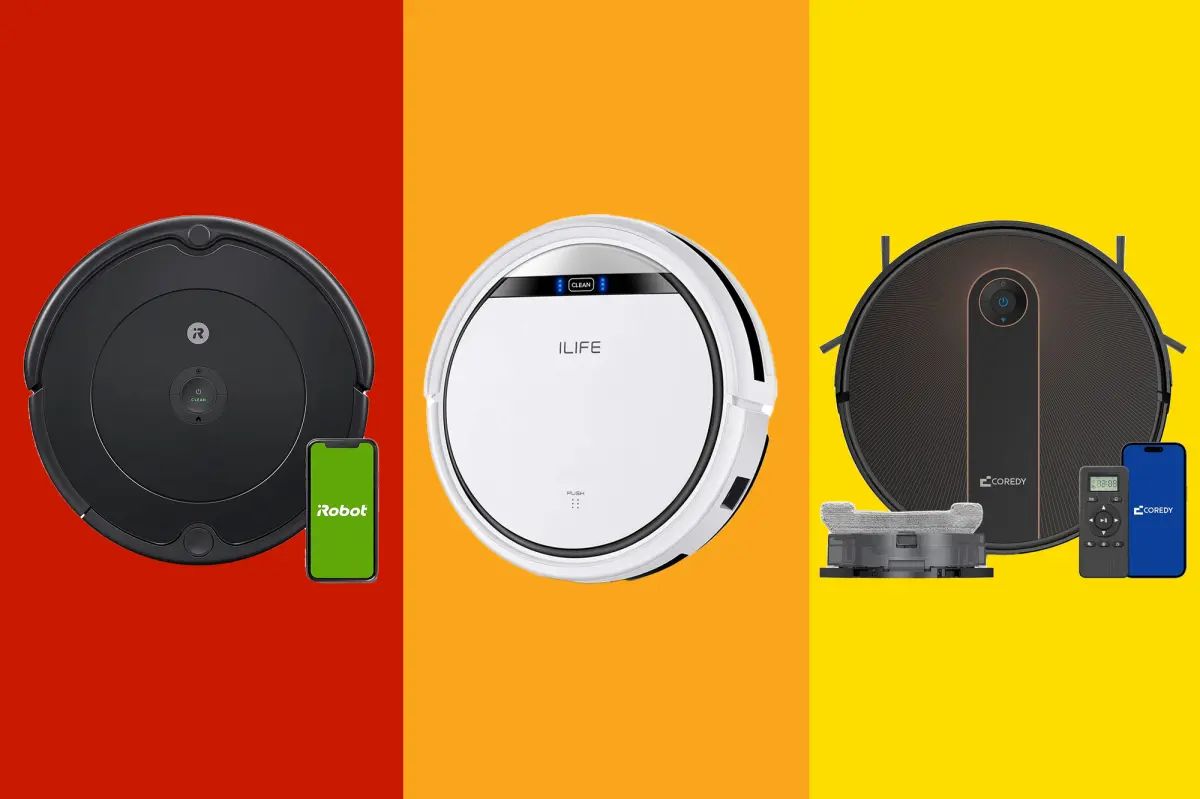Introduction
Keeping a clean and tidy home is a never-ending task, but thanks to modern technology, it’s become much easier. One of the most innovative cleaning tools to hit the market in recent years is the robot vacuum. Designed to autonomously navigate and clean your floors, these compact and intelligent devices have revolutionized the way we approach house cleaning.
A robot vacuum, also known as a robotic vacuum cleaner or robovac, is a compact cleaning gadget that uses advanced sensors and algorithms to clean your floors with minimal effort on your part. These small and sleek devices are equipped with various components and technologies that work together to ensure efficient and effective cleaning.
In this article, we will delve into the inner workings of a robot vacuum and explore the key components that make it function seamlessly. From sensor technology to navigation systems, cleaning mechanisms to battery power, we will uncover the fascinating features that contribute to a robot vacuum’s performance.
Whether you’re intrigued by the idea of a hands-free cleaning solution or simply curious about how these futuristic devices operate, this article will provide a comprehensive overview that uncovers the magic behind the robot vacuum.
What is a Robot Vacuum?
A robot vacuum is a compact and autonomous cleaning device that is specifically designed to clean floors without human intervention. It is also known as a robotic vacuum cleaner or robovac. These intelligent gadgets utilize sophisticated technology to navigate and clean various types of surfaces, such as hardwood, tile, carpets, and more.
Unlike traditional vacuum cleaners that require manual operation, a robot vacuum operates independently, making it a convenient option for busy individuals or those who simply want to enjoy more free time. With its compact size and sleek design, a robot vacuum can effortlessly access hard-to-reach areas, such as underneath furniture, and effectively remove dust, dirt, pet hair, and other debris.
One of the core features of a robot vacuum is its ability to navigate and move around a room without human guidance. Equipped with highly advanced sensor technology and intelligent algorithms, these devices can detect obstacles, avoid potential hazards, and create a meticulous cleaning path. This ensures that no area is left untouched, allowing for a thorough and efficient cleaning experience.
Additionally, many robot vacuums come with programmable features, enabling users to schedule cleaning sessions at specific times or intervals. This means you can set it to clean while you’re at work, ensuring you come back to a pristine living space.
While a robot vacuum may not completely replace the need for traditional vacuuming or deep cleaning, it is a valuable addition to any cleaning routine. It helps maintain cleanliness on a daily basis, reducing the frequency and effort required for manual cleaning.
With the constant advancements in technology, robot vacuums continue to improve and evolve. New models are equipped with enhanced capabilities, such as smartphone integration, voice control, and sophisticated mapping systems. These features further enhance the convenience and efficiency of cleaning, making robot vacuums an increasingly popular choice for homeowners worldwide.
Components of a Robot Vacuum
A robot vacuum comprises several key components that work together to ensure its efficient cleaning performance. Let’s explore the essential elements that make up a typical robot vacuum:
- Motor: The motor is the powerhouse of the robot vacuum. It generates suction power to lift dirt, dust, and debris from the floor into the vacuum’s collection bin.
- Brushes: Robot vacuums are equipped with different types of brushes to agitate and loosen dirt. The main brush, often made of bristles or rubber, works alongside side brushes to sweep debris into the vacuum’s path.
- Dustbin: The dustbin or collection bin is where all the collected dirt and debris are stored. It is usually located at the rear of the robot vacuum and can be easily emptied by the user.
- Filters: Robot vacuums incorporate various filters to trap dust particles and allergens, preventing them from being released back into the air. Common types of filters used include foam, HEPA (High-Efficiency Particulate Air), and high-performance filters.
- Sensors: Sensors play a crucial role in the navigation and obstacle avoidance capabilities of a robot vacuum. These sensors, including infrared sensors, optical sensors, and bumper sensors, detect any obstacles in the vacuum’s path and adjust its route accordingly.
- Navigation System: Most robot vacuums utilize a combination of sensors and algorithms to create a systematic cleaning pattern. This allows them to efficiently navigate around furniture, walls, and other obstacles, ensuring that no area is missed during the cleaning process.
- Battery: The battery provides the power needed for the robot vacuum to operate. Typically, a robot vacuum comes with a rechargeable battery that allows it to clean for a certain duration before requiring to be recharged.
- Charging Dock: When the robot vacuum’s battery runs low, it automatically returns to its charging dock to recharge. The charging dock is connected to a power source, ensuring that the robot vacuum is always ready for its next cleaning session.
These are the fundamental components of a robot vacuum. Each component plays a crucial role in ensuring the seamless operation and effective cleaning performance of the device.
Sensor Technology
Sensor technology is a fundamental aspect of robot vacuums, enabling them to navigate and clean efficiently. These intelligent devices are equipped with various sensors that work together to detect obstacles, map the surrounding environment, and ensure smooth operation. Let’s explore the key sensor technologies used in robot vacuums:
- Infrared Sensors: Infrared (IR) sensors are commonly used in robot vacuums to detect obstacles and prevent collisions. These sensors emit infrared light beams and measure the time it takes for the beams to bounce back. By analyzing the reflections, the robot vacuum can determine the proximity of objects in its path and adjust its route accordingly.
- Optical Sensors: Optical sensors, such as cameras or cliff sensors, provide additional environmental information to the robot vacuum. Camera sensors can capture images of the area being cleaned, allowing the device to recognize objects or detect specific cleaning zones. On the other hand, cliff sensors detect changes in surface heights, preventing the robot vacuum from falling down stairs or edges.
- Bumper Sensors: Bumper sensors are located on the front of the robot vacuum and serve to detect physical contact with objects or walls. When the bumper sensor detects an obstruction, it signals the robot vacuum to change direction and continue cleaning along a different path.
- Drop Sensors: Drop sensors, often using infrared or laser technology, sense changes in surface heights. These sensors help the vacuum identify when it is approaching a ledge or stairs, allowing it to avoid falling or damaging itself in the process.
- Virtual Wall Sensors: Some robot vacuums come with virtual wall sensors that emit an infrared signal to create a virtual boundary. This allows users to restrict the vacuum’s cleaning area, preventing it from accessing certain rooms or areas where it may cause disruption.
The combination of these sensor technologies allows robot vacuums to maneuver around furniture, navigate tight spaces, and avoid obstacles with precision. These intelligent sensors continuously gather data, enabling the device to adapt its cleaning pattern in real time and ensure efficient cleaning coverage.
Furthermore, advancements in sensor technology have also led to the development of smart mapping capabilities in certain robot vacuums. These devices use sensors to create a map of the cleaning area, allowing for more strategic and systematic cleaning. With the help of sensors, robot vacuums can optimize their routes, avoid repetitive cleaning, and focus on areas that require more attention.
In summary, sensor technology plays a critical role in the functionality and effectiveness of robot vacuums. By intelligently sensing and responding to their environment, these devices can provide efficient and thorough cleaning while minimizing the risk of collisions or accidents.
Navigation Systems
Navigation systems are a vital component of robot vacuums, allowing them to move around a space effectively and efficiently. These systems utilize advanced algorithms and sensor technologies to navigate through obstacles, create cleaning paths, and ensure comprehensive coverage. Let’s explore the key navigation systems used in robot vacuums:
- Random Navigation: Some entry-level robot vacuums employ random navigation, where they move in no particular pattern until they encounter an obstacle. When an obstacle is detected, the vacuum changes direction and continues cleaning in a new path. While this approach may seem haphazard, it still manages to cover the entire cleaning area over time.
- Reactive Navigation: Reactive navigation utilizes sensors to detect obstacles in real-time and respond accordingly. When an obstacle is detected, the robot vacuum adjusts its path to avoid it, ensuring that it continues cleaning without interruptions. This navigation system allows the vacuum to efficiently clean around obstacles, such as furniture and walls.
- Mapping Navigation: Advanced robot vacuums are equipped with mapping navigation systems, which use sensors to create a virtual map of the cleaning area. By systematically scanning and memorizing the layout of the space, these vacuums can optimize their cleaning routes and avoid redundant movements. Mapping navigation also allows for more precise and targeted cleaning, as the vacuum can identify specific areas that require additional attention.
- SLAM (Simultaneous Localization and Mapping): SLAM is a sophisticated navigation technology used in high-end robot vacuums. It combines sensor input and advanced algorithms to create a detailed map of the cleaning environment in real-time. SLAM enables the vacuum to continuously track its position accurately while simultaneously mapping the area. This technology enhances navigation, as the vacuum can efficiently clean multiple rooms and return to its charging dock without getting lost.
Furthermore, robot vacuums with advanced navigation systems can often detect drops or stairs using drop sensors, preventing them from falling and getting damaged. They can also detect carpeted areas and adjust their cleaning mode and suction power accordingly, ensuring optimal cleaning performance on different surfaces.
Some robot vacuums also utilize smart features like boundary marking or virtual wall technology. By using sensors or magnetic strips, the vacuum can create virtual boundaries or restricted zones, preventing it from entering certain areas or rooms where it’s not desired to clean.
Overall, navigation systems are essential for robot vacuums to effectively maneuver and clean a space. Whether it’s random, reactive, mapping, or SLAM navigation, these systems enable robot vacuums to navigate obstacles seamlessly and deliver a thorough cleaning experience.
Cleaning Mechanisms
The cleaning mechanisms of a robot vacuum are what enable it to effectively collect dirt, dust, and debris from various surfaces. These mechanisms work together to ensure a thorough cleaning experience. Let’s explore the key cleaning mechanisms used in robot vacuums:
- Main Brush: The main brush, typically located at the center of the vacuum’s underside, is responsible for agitating and loosening dirt and debris from the floor. It can be made of bristles or rubber, and its design may vary depending on the model and specific cleaning requirements.
- Side Brushes: Robot vacuums often come equipped with one or more side brushes, also known as edge brushes. These brushes are positioned on either side of the main brush and work to sweep dirt and debris into the vacuum’s cleaning path. Side brushes are particularly effective at cleaning along walls, corners, and other hard-to-reach areas.
- Suction Power: The suction power of a robot vacuum is crucial for effectively capturing and collecting dirt and debris. The vacuum’s motor generates the necessary suction force to pull in and trap particles, ensuring a thorough cleaning performance on various surfaces, including hardwood floors, carpets, and tiles.
- Filtration System: Robot vacuums often incorporate a filtration system to capture fine dust particles and allergens, preventing them from being released back into the air. Commonly used filters include foam filters, HEPA (High-Efficiency Particulate Air) filters, and high-performance filters. These filters help improve indoor air quality and are particularly beneficial for individuals with allergies or respiratory sensitivities.
- Brush and Filter Maintenance: Regular maintenance of the brushes and filters is essential for the optimal performance of a robot vacuum. Over time, these components can become clogged with dirt and debris, impacting the cleaning efficiency. Therefore, it is important to clean or replace the brushes and filters as recommended by the manufacturer to ensure optimal cleaning performance.
- Debris Collection: As a robot vacuum cleans, it collects dirt, dust, and debris in its dustbin or collection bin. The size of the dustbin varies depending on the vacuum model, and it is typically located at the rear of the device. Many robot vacuums also have a sensor that alerts users when the dustbin is full, indicating the need for emptying.
By integrating these cleaning mechanisms, robot vacuums can effectively and efficiently clean different types of surfaces and eliminate common household dirt and debris. From the agitation of the main brush to the sweeping action of the side brushes, along with powerful suction and filtration, these mechanisms work together to ensure a thorough and convenient cleaning experience.
Battery Power and Charging
The battery power and charging capabilities of a robot vacuum are essential for its functionality and autonomy. A reliable and long-lasting battery, coupled with efficient charging methods, ensures that the robot vacuum can operate smoothly and complete cleaning tasks without interruption. Let’s explore the key aspects of battery power and charging in robot vacuums:
Battery Capacity: The battery capacity determines how long a robot vacuum can operate before it needs to be recharged. Higher capacity batteries allow for longer cleaning sessions and can cover more ground in a single charge. The battery capacity can vary depending on the robot vacuum model, typically ranging from around 1800mAh to 5000mAh or more.
Battery Life: The battery life refers to the total amount of time a robot vacuum can clean on a single charge. It is influenced by various factors, such as the cleaning mode selected, the surface being cleaned, and the overall power consumption of the device. Robot vacuums with longer battery life can clean more extensive areas or multiple rooms before requiring a recharge.
Charging Dock: Robot vacuums come equipped with a charging dock or base station where they return to recharge when the battery is low. The charging dock is usually connected to a power source, allowing the robot vacuum to recharge its battery automatically. It acts as a home base for the vacuum, ensuring that it is always ready to clean when needed.
Charging Time: The charging time refers to the duration it takes for a robot vacuum to fully recharge its battery. The charging time can vary depending on the model and the battery capacity. High-capacity batteries may take longer to charge compared to lower-capacity ones. Most robot vacuums take anywhere from 2 to 6 hours to charge fully.
Automatic Recharge and Resume: Many robot vacuums offer the convenience of automatically returning to their charging dock when the battery is low. Once recharged, they can resume cleaning from where they left off. This feature ensures that the vacuum completes the cleaning task without the need for manual intervention or supervision.
Battery Replacement: Over time, the battery of a robot vacuum may degrade and lose its capacity to hold a charge. Some models allow for easy battery replacement, enabling users to replace the old battery with a new one, thereby extending the lifespan and usability of the device.
The battery power and charging capabilities of a robot vacuum are crucial for its performance and convenience. To make the most of a robot vacuum, it is advisable to choose a model with a suitable battery capacity, consider the battery life based on cleaning needs, and ensure efficient charging through a reliable charging dock.
Remote Control and Smartphone Integration
The remote control and smartphone integration features of a robot vacuum add convenience and flexibility to the cleaning process. They allow users to control and monitor the vacuum’s operation from a distance, providing enhanced control and customization options. Let’s explore the benefits and functionalities of remote control and smartphone integration in robot vacuums:
Remote Control: Many robot vacuums come with a dedicated remote control that allows users to conveniently start, pause, or stop the cleaning process. The remote control typically includes buttons for various functionalities, such as initiating spot cleaning, scheduling cleaning sessions, adjusting cleaning modes, and directing the vacuum to specific areas that require extra attention. Remote control provides users with a hands-on approach to managing the vacuum’s cleaning tasks without having to physically interact with the device.
Smartphone Applications: More advanced robot vacuums offer smartphone integration through dedicated mobile applications. These applications enable users to control and monitor the vacuum’s operation from their smartphones or tablets. Smartphone apps often offer a range of functionalities, including remote control capabilities, scheduling options, cleaning mode adjustments, and access to real-time status updates and cleaning history. Some apps even provide mapping features that allow users to designate specific zones to be cleaned or excluded.
WiFi Connectivity: To facilitate smartphone integration, robot vacuums feature built-in WiFi connectivity that enables seamless communication between the vacuum and the smartphone application. WiFi connectivity eliminates the need for a dedicated remote control and allows users to monitor and control the vacuum from anywhere within the range of the home network. This feature enhances flexibility and convenience, allowing users to manage and customize the cleaning process even when they are not at home.
Voice Control: Some robot vacuums integrate with virtual assistant devices, such as Amazon Alexa or Google Assistant, offering voice control functionality. With voice commands, users can control the vacuum’s actions, initiate or pause cleaning sessions, and check the cleaning status without even picking up a remote control or smartphone. Voice control adds another layer of convenience and accessibility to the cleaning experience, making it effortless and hands-free.
Integration with Home Automation Systems: Certain robot vacuums can integrate with existing home automation systems, allowing users to incorporate the vacuum into their smart home ecosystem. This integration enables seamless control and coordination with other smart devices in the home, such as smart lighting or security systems. Users can create routines or trigger actions that involve the robot vacuum, further enhancing the automation and control of the cleaning process.
The remote control and smartphone integration features of a robot vacuum provide users with convenient and customizable control over its cleaning operations. Whether through a remote control or a dedicated mobile application, these features enable users to effortlessly initiate cleaning, schedule sessions, adjust settings, and even monitor the cleaning process from anywhere, making the cleaning experience more flexible and personalized.
Maintenance and Troubleshooting
Maintenance and troubleshooting are important aspects of owning a robot vacuum to ensure its optimal performance and extend its lifespan. By following proper maintenance practices and addressing common issues, users can keep their robot vacuums in top condition. Let’s explore some key maintenance and troubleshooting practices:
- Cleaning the Brushes and Filters: Regularly cleaning the brushes and filters of a robot vacuum is essential for maintaining its cleaning efficiency. Over time, these components can become clogged with dirt, hair, and debris, impacting the suction power and overall performance. Follow the manufacturer’s instructions to remove and clean the brushes and filters, ensuring their proper functioning.
- Emptying the Dustbin: The dustbin of the robot vacuum should be emptied regularly to prevent clogging and to maintain optimal cleaning performance. When the dustbin is full, the vacuum’s suction power can decrease, and the collected debris may spill back onto the cleaned surface. Empty the dustbin after each cleaning session or whenever it is full.
- Checking and Cleaning Sensors: The sensors of the robot vacuum play a crucial role in its navigation and obstacle avoidance capabilities. Ensure that the sensors are clean and free from any dirt or debris that may affect their performance. Wipe the sensors gently with a soft cloth or a cotton swab to maintain their effectiveness.
- Cleaning the Wheels: The wheels of the robot vacuum can accumulate dirt, hair, and other debris over time. Regularly check and clean the wheels to ensure smooth movement and efficient navigation. Remove any obstructions or tangled hair that may hinder the vacuum’s mobility.
- Checking and Cleaning the Charging Contacts: The charging contacts on both the robot vacuum and the charging dock should be kept clean to facilitate proper charging and uninterrupted operation. If there is any dust or residue on the contacts, use a clean, dry cloth to wipe them gently.
- Software Updates: Keep the robot vacuum’s software up to date by installing any available firmware or software updates. Manufacturers often release updates to enhance performance, introduce new features, or address known issues. Check the manufacturer’s website or the mobile application for any available updates and follow the provided instructions to ensure your robot vacuum is running on the latest software version.
- Troubleshooting Common Issues: If you encounter any issues with your robot vacuum, consult the troubleshooting guide provided by the manufacturer. Common issues may include error codes, connectivity problems, or abnormal behaviors. By following the troubleshooting steps provided, you can often resolve minor issues without the need for professional assistance.
- Regular Inspection and Maintenance: Conduct periodic inspections of your robot vacuum to identify any loose parts, worn-out components, or signs of damage. It is important to address any potential issues promptly to prevent further damage and ensure the vacuum’s reliable operation.
Following these maintenance and troubleshooting practices will help ensure that your robot vacuum stays in optimal condition, performs effectively, and lasts for a long time. Remember to always refer to the manufacturer’s instructions and guidelines for specific maintenance recommendations and troubleshooting assistance.
Conclusion
Robot vacuums have become an indispensable tool in modern households, offering a convenient and efficient way to keep floors clean without manual intervention. These intelligent devices utilize advanced technologies, such as sensor technology, navigation systems, and various cleaning mechanisms, to navigate and clean our living spaces effortlessly.
Throughout this article, we have explored the key components that make up a robot vacuum, including the motor, brushes, sensors, and filtration systems. We have also discussed the importance of battery power and charging, as well as the benefits of remote control and smartphone integration, which provide users with enhanced control and flexibility.
Maintaining a robot vacuum through regular cleaning of brushes, filters, and sensors, as well as emptying the dustbin as needed, ensures its optimal performance and longevity. Following troubleshooting steps and keeping the device’s software updated also helps resolve common issues and maximize its capabilities.
Robot vacuums have revolutionized the way we approach household cleaning, saving us time and effort while consistently delivering a thorough clean. With their ability to autonomously navigate around furniture, avoid obstacles, and adapt to different surfaces, these devices have become valuable assets in maintaining clean and tidy homes.
As technology continues to advance, we can expect even more sophisticated features and functionalities in future robot vacuums. From improved navigation systems to enhanced mapping capabilities and integration with smart home systems, the possibilities for innovation in the world of robot vacuums are seemingly endless.
So, whether you’re a busy professional looking to simplify your cleaning routine or someone who simply wants to embrace the convenience of modern cleaning technology, investing in a robot vacuum can transform the way you maintain the cleanliness of your home.
With their ability to automate the cleaning process, navigate through tight spaces, and adapt to different surfaces, robot vacuums are revolutionizing the way we approach household cleaning. Their advanced technologies, such as sensor technology, navigation systems, and various cleaning mechanisms, ensure efficient and thorough cleaning with minimal effort on our part. From their battery power and charging capabilities to remote control and smartphone integration, these devices offer convenience and flexibility that can fit seamlessly into our lifestyles. By following proper maintenance practices and addressing any troubleshooting issues that may arise, we can ensure that our robot vacuums remain in optimal condition and consistently provide clean and tidy living spaces. As technology continues to evolve, we can anticipate even more innovative features and functionalities in future robot vacuums, making them an even more valuable asset in our daily lives. So why not embrace the future of cleaning and invest in a robot vacuum today?







